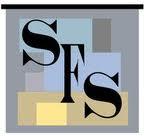
Brian Deans-Rowe is a Creative Director and digital sculptor with film credits that include the likes of Antz, Shrek and Madagascar. He also contributed to several nationally syndicated cartoon commercials for Wrigley's, Honey Nut Cheerios, for and the Cartoon Network and helped create a Nintendo Wii video game.
Brian began his career by honing invaluable skills during his time at DreamWorks as a programmer in R&D and then in their Modeling Department where he created some of his best known works—the models for Shrek's Fairy Godmother and Madagascar's Melman the Giraffe. He continued to sharpen his skills when he moved to LAIKA as their Senior Modeler. The constant learner that he is Brian didn't stop there, he also worked as a Technical Director and Lighting TD to expand his knowledge of the film-making process. If all this wasn't enough he was also a Lead Character Artist for gaming company Blue Fang Games and worked on their release of World of Zoo for Nintendo Wii.
And those are just the highlights of Brian's ridiculously long and successful resume.
After honing his skill-set as a digital sculptor, computer geek, modeler, director, and game contributor he began his own firm, Stone Fence Studios—where he is currently their Creative Director. He now combines his artistic and technical skills for his company's work in feature films, commercials, games and graphics programming.
We were lucky enough to gleam some advice from this jack-of-all-animation-trades in a Q&A session:
What is your firm's focus within animation and what led your firm tohave such a focus?
Stone Fence Studios is a start-up, so we are still refining our focus and identifying our industry niche. We have taken on a range of projects, including asset creation for iPad games and commercials, scientific visualization, and visual development for independent films. Ultimately, we hope to create feature-length animated films.
Fill in the blank: The future of animation is _________.
Everywhere. Powerful mobile devices, next generation game systems and HDTV are growing the demand and raising the bar on quality for animation.
What are the best and worst aspects about working in the animation field?
Every day, an animator gets to collaborate with creative people on interesting projects. Animation is simply fun, and that is the best aspect of the job. Demanding hours are the most challenging aspect of the field. Creating high quality animation always requires dedication and commitment
Starting Stone Fence Studios doubles down on both the best and worst, as we get to pick creative individuals we spend our days with and projects to pursue, but also add new responsibilities and time demand to an already packed schedule.
Among your firm's achievements, which one(s) are you the most proud of?
When Shrek won the Oscar for Best Animated Film, I felt great pride in being a contributor to that project. It was especially remarkable considering that just a few short years earlier, the only company making feature animated films in North America was Disney. Since then, the industry has continued to grow and the number of companies making feature films has exploded.
What skills/qualities does your firm seek out when hiring new employees?
We will seek individuals with a passion for animation, interest in storytelling, collaborative spirit, and dedication to quality.
What particular schools, if any, does your firm recruit new hires from? If none, where do you recruit new hires?
Boston University Center for Digital Imaging Arts is educating a new generation of great talent, and I have the privilege to work with them often as an Instructor there. As a New England company, SFS is fortunate to have access to other great area schools, such as RSDI and Massachusetts College of Art and Design.
What advice would you give to aspiring animators?
Work hard. It is a competitive field, and a lot of people want to do it. Always strive to learn more about your craft and refine your skills.
What were your most challenging projects, and why?
Building a studio from scratch is presenting the most challenging work, but it also has the potential to bring the greatest rewards.
What kind of education did it take to get you where you are today?
Education is ongoing for me, and in animation the tools change rapidly. My education in animation really began at DreamWorks, as I spring-boarded a long-standing interest in visual arts to move from R & D to Production. My education continues today, as I strive to stay on top of my field.
What software packages does your firm prefer to use? Which one would you recommend to beginners?
Our studio prefers Maya. With Autodesk’s free licensing for students, there's no reason for beginners to start with anything but the industry standard.
Could you share with us your best story about working in the animation industry.
One favorite story comes from my time at DreamWorks. We had just screened Antz to Steven Spielberg for the first time. He loved it, but in this version, the flood began spontaneously, and he felt it needed to be caused in some manner by direct action. Everyone was asked to provide solutions, and it was my suggestion that the foreman hit the wall with the pick, causing the flood to begin. The Directors chose to use this solution in the final film. This is memorable to me because it shows how, even as a young artist, everyone contributes and collaborates in film to produce the final result.
Do you think that there is an increasing or decreasing demand for voice over and casting professionals overall? Why?
Animation is a growth industry. It appeals to young and old and is being used in an increasing variety of ways. Anyone with a passion for animation can be excited about the opportunities waiting for him/her in this field.
Check out more interviews at The Animation Career Review Interview Series.
